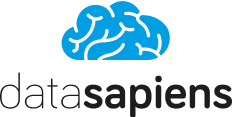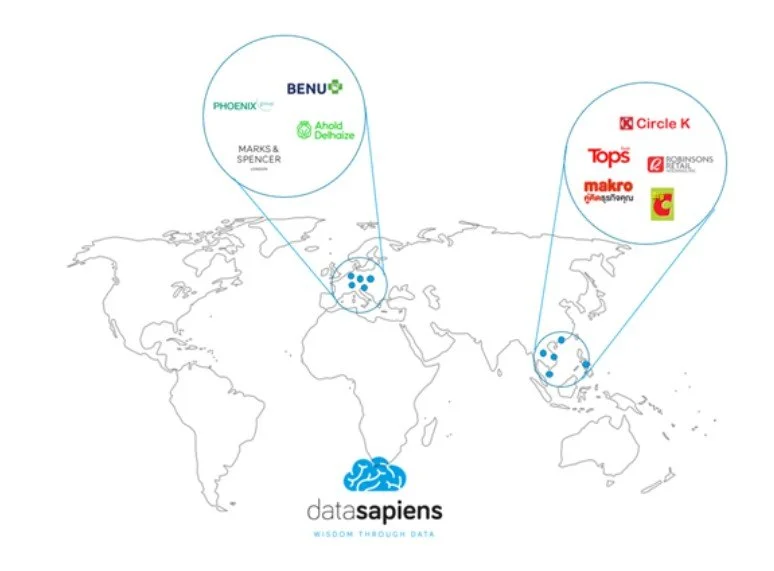Impact of cultural differences in a virtual era
New normal.
That’s what people call it these days—the post-pandemic world. It has brought plenty of changes to us all, some of which we have realized immediately, some of which we only recognize as time passes.
In my opinion, one of the latter ones is cultural differences and their impact on business. As virtual meetings take place worldwide, many of us might have forgotten their significance.
In datasapiens, we have emphasized building a remote-first, asynchronous company since the pandemic started. Not only by adjusting our day-to-day operations & way of working but also by the way our team is set up.
We realized we wanted to attract talent from all over the world. We have always been an international team—a company founded by partners from the Czech Republic, Belgium & the UK. Yet, most of our colleagues are located in Prague. As time went by, more & more of the incomers started to be from different parts of the world.
We have colleagues in the heart of Poland, the Atlantic islands of the Azores, Serbia, Slovakia, and South Africa. Seven different nationalities work like a well-oiled machine.
Yet, although most of us are Europeans, there are still certain specifics for every country. We have learned to deal with our differences and use them to our benefit.
As a client-focused company, our business has two main geographical markets.
One of them being Central Europe & the other South East Asia.
Working on the Central Europe market, we could say our approach was “business as usual” as that is where most of us come from & we are familiar with most of the specifics.
However, as soon as we started our expansion towards South East Asia, we realized that we would need to adjust in some ways to succeed. Here are some of the differences we have been dealing with.
Time Difference
A simple one to start with. We try to use our internal set-up so that our employees are in the +-4 hours CET zone. Hence, deploying projects with clients in Indochina Timezone has been challenging.
We had to adapt our schedules to clients’ meetings, as the conjunction time was not very spacious. We had to ensure our vertical meetings would be held early morning and late afternoon in the Indochina timezone. Both sides have accommodated, and the solution was found very quickly.
Scheduling and Project Management
When going through the chart below, we realized that planning & scheduling of the projects might be one of the significant cultural differences we will be dealing with. However, when you think about it, it does make sense.
Linear time (the approach used in CE) means that the project steps are approached consecutively – meaning you do one thing/task at a time. Before you can even come to another job, you will finish your initial one. The project team’s primary focus is always on meeting deadlines, and project management is valued over flexibility.
Flexible time (the approach used in TH) presents a fluid process, being able to change tasks based on what opportunities are opening up en route. It means more multitasking and interruptions are not an unprecedented sight. The main focus is put on adaptability.
Although our approaches might differ, we could find common ground that satisfies both parties. That enables our projects to run smoothly. We tend to be flexible, adaptable & yet cautious about meeting deadlines.
Detail Oriented
Another difference is the attention to detail. In Europe, you might come across rigid cultures like Scandinavian or Dutch, which are highly detail-focused. There are also societies where attention to detail might not be the highest.
While doing business in South East Asia, we quickly learned that most of our clients and partners have a profound attention to detail.
We’ve learned our lesson with one functionality that we use in our platform – the precision switch. It enables users to see approximate results or if desired, exact results. However, exact results take a bit longer to calculate.
When analyzing our platform usage, we can see that most users use the Exact option, despite reports taking longer to load. On the other hand, our clients from Central Europe use mostly the Approx option, as it provides them with (almost) identical data and enables them to gain a quick insight.
We learned that with our clients from South East Asia, it’s worth going to a more detailed level; that is precisely what we try to do.
Decision Making
As our clients gather precise data, they move on to the following decision-making process. Speaking of datasapiens, we are a small, dynamic, fast-paced company. Hence we always try to stay on top of things and make decisions quickly.
Not everyone uses this approach, though, and that is completely fine. It’s essential to adjust to your organization’s needs. Some of the more prominent organizations in SE Asia like to get as much information on the related problems as possible. They are usually curious to hear more opinions and make decisions based on various perspectives.
To quote Erin Meyer from her book The Culture Map, “In many cultures, meetings are not seen as opportunities for decision-making, but rather merely as a venue in which questions can be asked, and possibilities explored together.”
This is what we try to provide & hence to make sure we share a satisfying level of information & materials before every week’s calls so that we can explore these possibilities together with our clients.
Personal differences
Last but not least, there are some personal differences regarding cultural variations.
One of them is a wide usage of nicknames around South East Asia & in Thailand specifically. Almost everyone in Thailand uses a nickname that they go by.
The first few times, we had to make sure & double check it was not insulting towards anyone, as this concept is something not known in European circles. Nicknames are usually short (one or two syllables) and are given at birth or during the early years by parents.
Also, with the apparent introduction of the high amount of virtual meetings, it has become expected, in Europe, that members will be logging into calls with their cameras on.
However, in Asia, it is common for participants to stay connected throughout the meeting without their cameras on. Although once the relationship between the two sides is established and they get to know each other, they tend to join calls with the camera more often.
So, what is our main takeaway from this?
Technology is great. It enables us to run global projects without leaving our living rooms. Nonetheless, we shall always be aware that the person on the screen comes from the other side of the world and be respectful.
Acknowledging cultural differences and being aware of them can prove crucial to running your international project successfully.
Speaking for datasapiens, we believe there will be more international projects in our pipeline. That will allow us to discover more perspectives & management approaches, as it helps us to evolve, grow & see the business world through various lenses.


